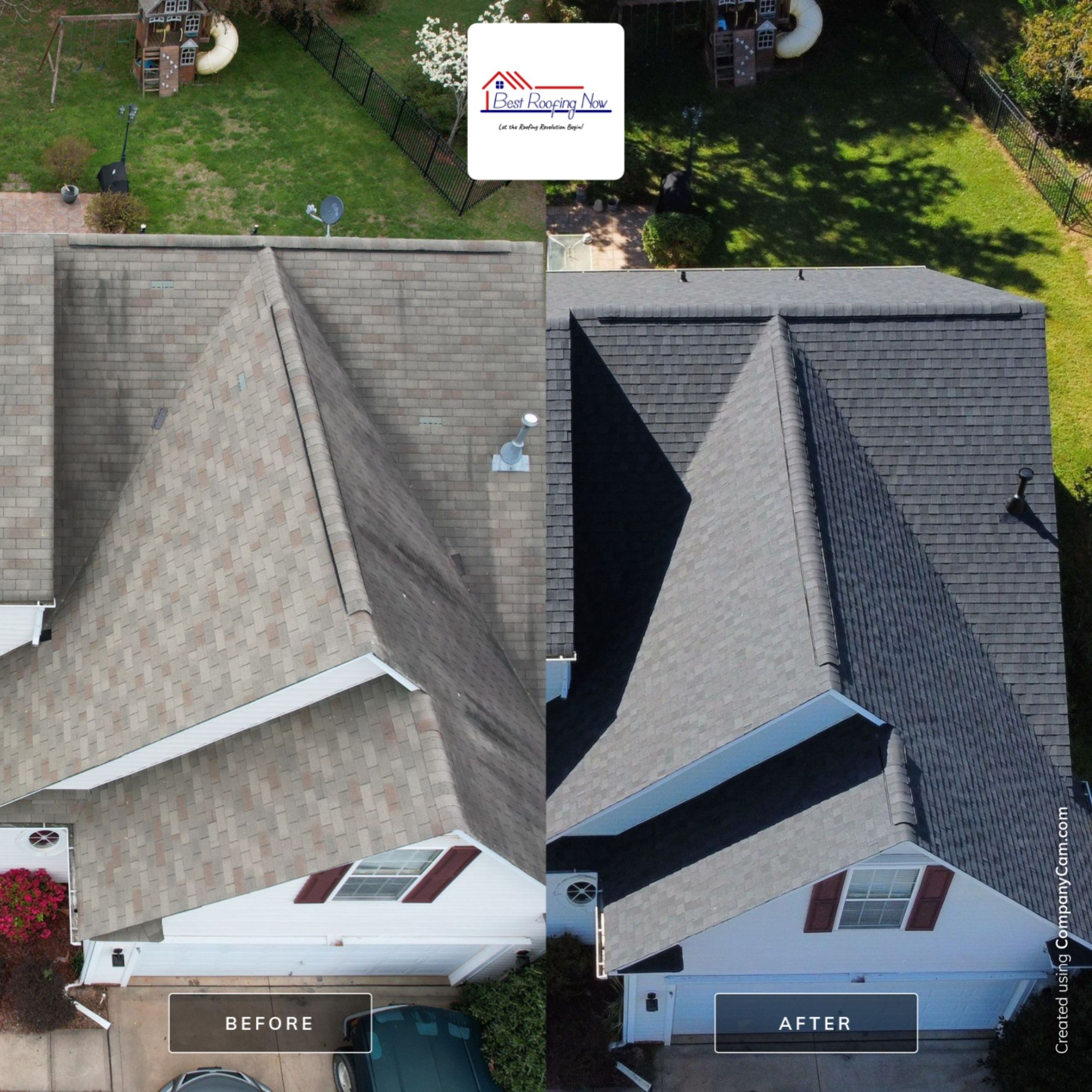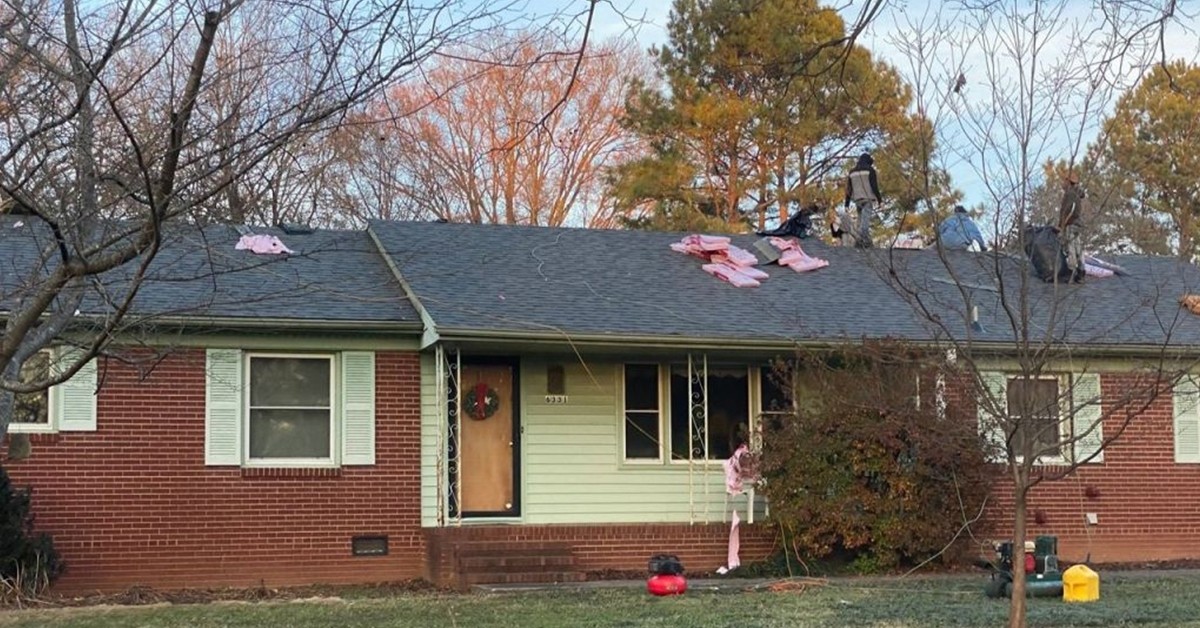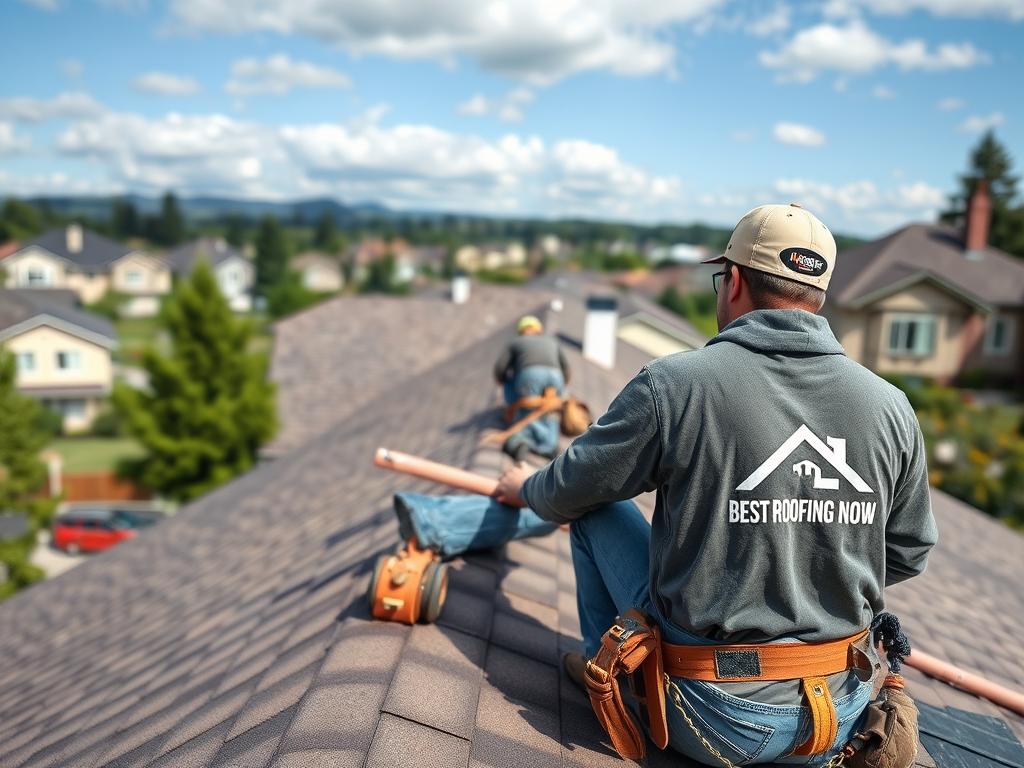
Key Takeaways:
- Roof damage is not uncommon after severe weather.
- Wind, lightning, and hail can damage your roof, each having a distinct set of signs to look for.
- A roof restoration can be more cost-effective than a complete replacement and have the same warranty.
- Keep inspecting your roof and focus on key damage indicators to know when to call a professional.
Natural calamities are wreaking havoc all over the country. From wildfires to hurricanes & floods, homeowners have a lot to worry about.
And while you may be well-prepared to deal with the aftermath of such disasters, your roof may not be as fortunate. So, it’s essential to identify damage to your roof caused by wind, lightning, and hail. Such worries become especially pressing if you reside in an area prone to extreme weather conditions.
If hiring a roofing company in Denver, NC, is something you’re considering. We want you to be wary of a few things. Here are three of the most common types of roof damage and the signs to look out for:
1. Wind Damage
Strong gusts of wind that blow debris against your roof or tree limbs fall cause wind damage. Where there are ways to make your roof wind resistant, the truth is that no roof is entirely safe from this damage. To spot such damage with certainty, your roofing company in Denver NC, would have to conduct a detailed inspection.
– Cracked or missing tiles
Strong winds make your roof more susceptible to missing or cracked tiles. Winds move objects around, which can hit your roof, break a tile, and possibly cause leaks.
– Torn, curled, or missing shingles
Shingles are most susceptible to wind damage to your roof. When missing or torn, they can no longer protect your roof as intended and make it vulnerable to water damage.
– Damaged or loose gutters and downspouts
The constant rattling of gutters and downspouts in high winds can cause them to become loose or even fall off completely. This leaves your roof unprotected from other hazards and can also cause severe damage to your home’s foundation.
– Debris on your roof
Trees, branches, and other debris can become a common issue leading to further problems such as pest infestation and leaks.
– Damaged or missing vents
Vents on your roof help to circulate air and prevent the build-up of moisture, saving it from mold and mildew. If they are damaged or missing, this can lead to even more severe issues.
– Leaning chimney
For obvious reasons, we need our chimneys straightened up. If high winds have caused your chimney to lean, it could be in danger of eventually collapsing.
2. Lightning Damage
Lightning can be scary, and when it strikes your home, it could cause several problems, such as fires, electrical surges, and even gas leaks.
-Holes in the roof
Where you’ll likely find this kind of damage in metal roofs, it’s possible that any type of roof could have holes from a lightning strike. Look for burnt edges or any sign of melting. Roof restoration may be possible depending on the size and severity of the damage.
– Shingles split and cracks
When shingles are struck by lightning, they can often split or crack. This damage is usually cosmetic, but if left unaddressed, it could lead to more severe problems. If your shingles are cracked or split, you may want to consider roof restoration.
-Burned or missing shingles
Lightning may be to blame if there’s been a recent lightning storm in your area and you notice your shingles burned or missing while inspecting your roof. Damaged shingles will need to be replaced depending on the extent of the damage. You’ll need to call in a roofing company in Denver, NC.
-Dents in metal roofs
While looking for lightning damage signs, check for dents in your metal roof. You must avoid walking on a metal roof, as it could cause further damage or is more susceptible to collapsing. You can pull a DIY and repair them if there are only a few dents.
3. Hail Damage
Hail damage may be the easiest one to spot. There can be several signs of hail damage on your roof. Let’s look at a few.
– Shingles that are cracked, chipped, or missing
The telltale sign that your roof has been hit by hail is if you find cracked, chipped, or missing shingles. This damage exposes the underlying layers of your roof to the elements and can cause leaks.
– Gutters and downspouts that are dented or damaged
Not only can hail damage your roof, but it can also ruin your gutters and downspouts. If you notice any dents or imperfections, inspect them to see if they need to be repaired or replaced. Sometimes, the hail will loosen the gutters from your roof, which can cause even more damage.
– Vents that are damaged or missing
When hailstones hit your roof, they can easily damage or dislodge the vents. Because vents are important for keeping your attic cool, it’s essential to inspect them after a severe storm.
– Damaged or loosened roof sheathing
The sheathing is the wood layer attached to the roof trusses. Hail holds the capacity to damage this layer, which can cause the roof to become unstable.
Ending Note
Damage from severe weather can be lethal on your roof, and it’s important to have a professional roofing company inspect your roof extensively. And now that you know all the warning signs to look for and how to distinguish between different types of damage, you will know exactly where to begin.
Roof Restoration in Charlotte, NC!
Opting for roofing restoration from Priority Roofing when dealing with wind, lightning, or hail damage may be the best option to keep your roof in top condition. Instead of a complete replacement and overhaul of your roof in Denver, NC, we offer roof restoration, which takes half the price of a roof replacement and provides you with a full tax deduction in one year.
And if this isn’t enough to convince you, consider this: roof restoration comes with the same warranty as a roof replacement would. You enjoy benefits such as in-house roofing services, energy efficiency, designer, and commercial roof leads when choosing us for your roofing needs.
We will inspect your roof and repair it for any damage. Schedule a roof inspection appointment today
Source from https://priorityroofs.com/



